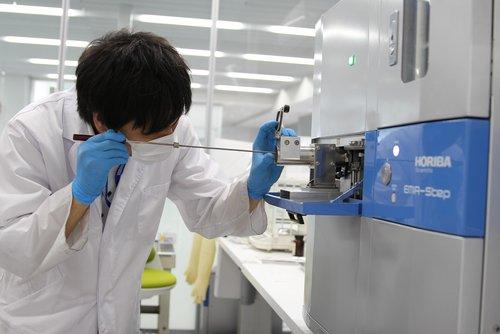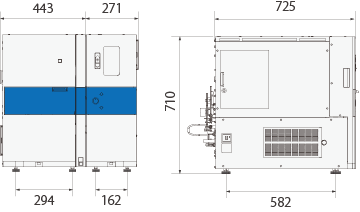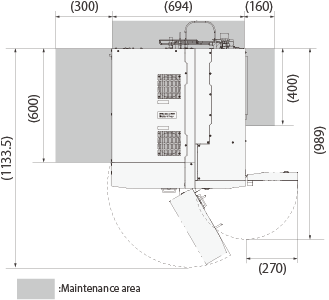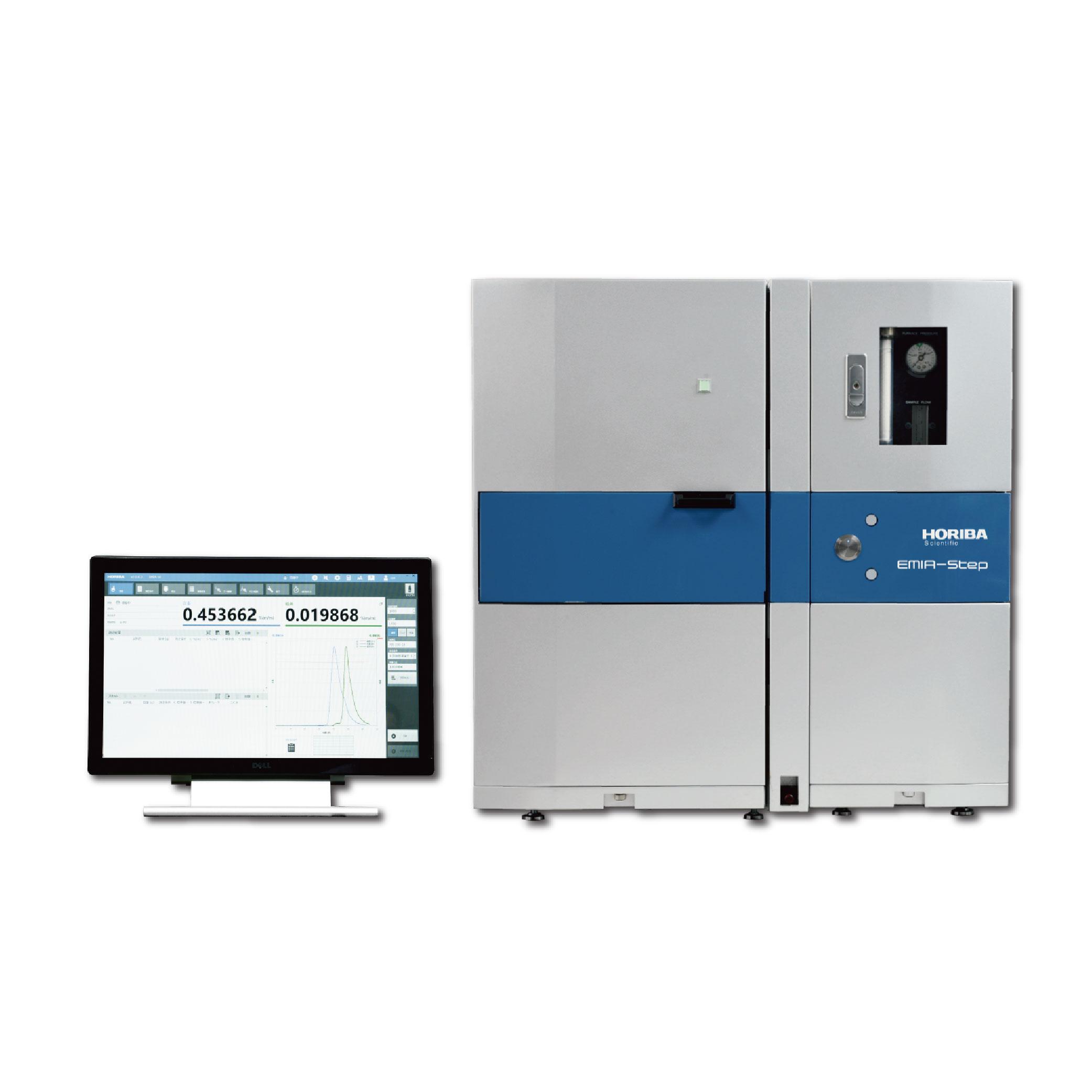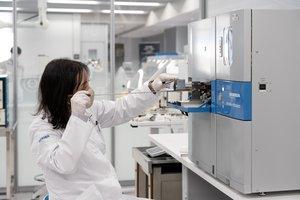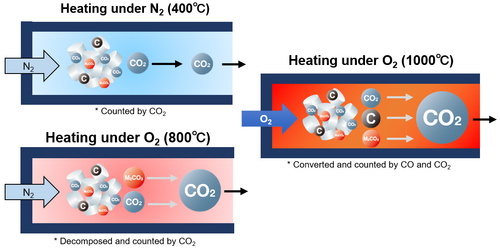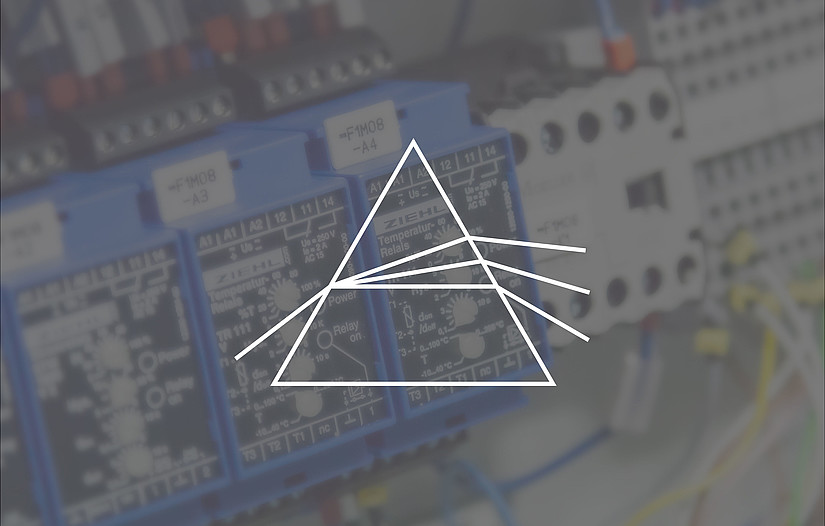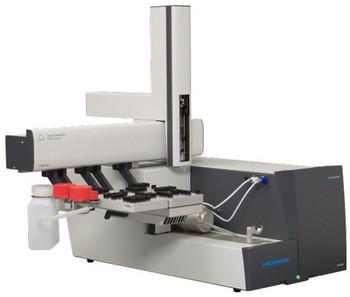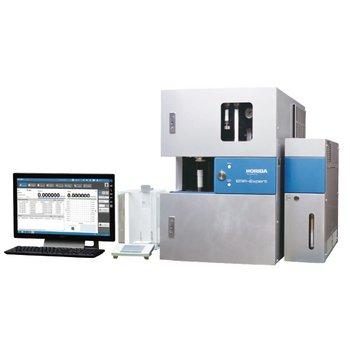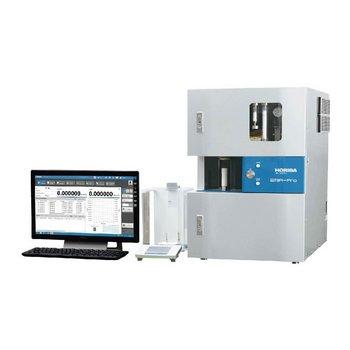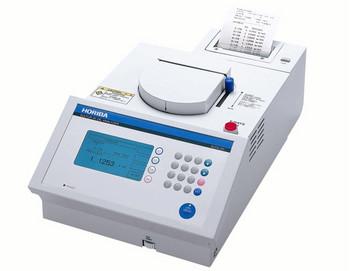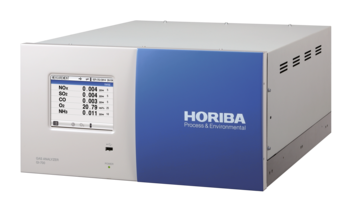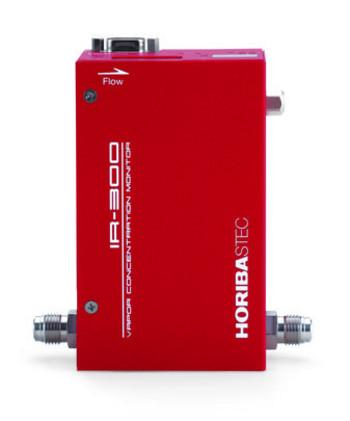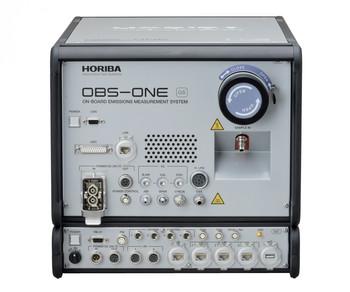Greater Accuracy
Proven NDIR Gas Detection Technology
The EMIA-Step Carbon/Sulfur Analyzer uses the infrared method to measure Carbon and Sulfur after combustion in an electric resistance furnace. With HORIBA's renowned Non-Dispersive Infrared (NDIR) measurement capabilities, it can detect carbon ranging from 0.0003 to 6.0% (m/m) and sulfur ranging from 0.0004 to 1.0% (m/m). The analyzer is also equipped with a unique CO detector and can be used for a wide range of inorganic materials, including steel, cokes, catalysts, non-ferrous alloys like aluminum, and lithium-ion battery materials.
Please also refer the Measurement Principle page for the details.
Temperature Control Function
The combustion furnace of the analyzer utilizes a distinctive sealed system, which facilitates efficient combustion of flame-retardant samples through high-pressure oxygenation. The system offers excellent temperature stability, ensuring consistent performance across low and high temperatures. This broadens the range of applications to samples containing substances that are easily decomposed and burned at low temperatures. The decomposition combustion of organic and inorganic matter can be easily observed.
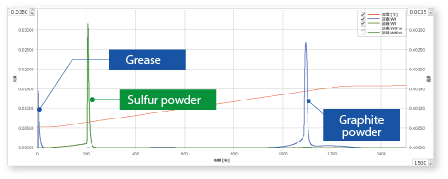
Temperature rise control from 300 °C to 900 °C
Improved Measurement and Maintenance Efficiency
New dust-filter provides easy maintenance capability
The EMIA-Step features a dust-filter mechanism that has been proven effective in high frequency induction heating models. The filter unit collects dust generated by high-temperature combustion to prevent it from adhering to the piping after the combustion furnace. This reduces the adsorption of CO2 and SO2 gases by dust and ensures highly accurate and sensitive analyses.

Schematic of tubular electric resistance heating furnace
High Throughput
The EMIA Series can complete one measurement cycle, measurement-display result-cleaning, in 70 seconds (i.e. about 50 samples/hour).
Gas Collection Mode
Our exclusive furnace features a closed structure that enables efficient combustion under high-pressure oxygen and allows for the burning of high melting point materials. This unique furnace design allows Gas Collection analysis, in which small amounts of gases are captured within the furnace and then transferred to the detector for analysis.
More Intuitive Software for Easy Operation
Advanced Operation Software
The EMIA Series features its own proprietary operating software, which has been designed with a focus on ease of use, optimizing layout, operating menus, and functions for enhanced user-friendliness.
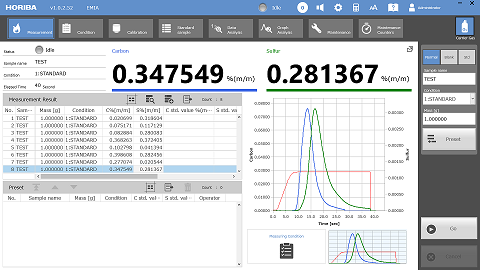
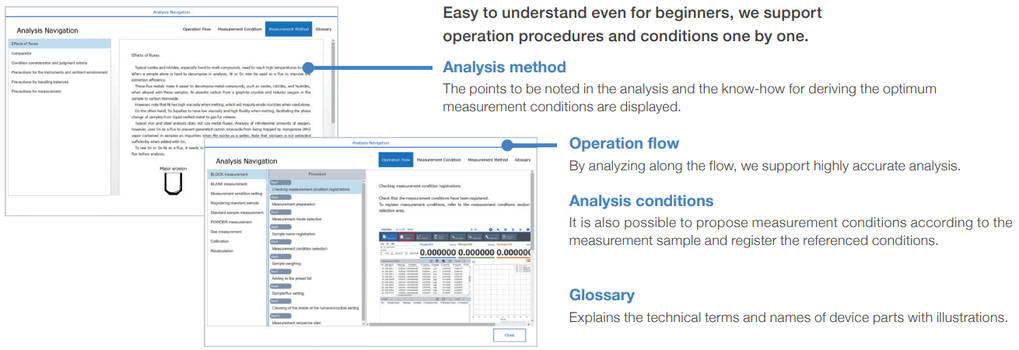
Enhanced Operator Assistance
Additionally, the software includes a self-diagnostic monitoring feature to assess the status of connected devices, an alarm function, and three navigators to recommend the most suitable conditions for samples, troubleshoot errors, and alert users to perform maintenance. These features improve daily operation and ensure efficient analysis.
Watch the EMIA Series maintenance video
*The user interface and functionalities of the software for this system are the same with those of EMIA-Pro
Compliance with ISO/ASTM Standards
TestMethods | Title | Carbon | Sulfur |
ISO/TR 15349-1:1998 | UNALLOYED STEEL — DETERMINATION OF LOW CARBON CONTENT — PART 1: INFRARED ABSORPTION METHOD AFTER COMBUSTION IN AN ELECTRIC RESISTANCE FURNACE (BY PEAK SEPARATION) | ✓ | |
ISO/TR 15349-3:1998 | Unalloyed steel — Determination of low carbon content — Part 3: Infrared absorption method after combustion in an electric resistance furnace (with preheating) | ✓ | |
ASTM E 1019-18 | Standard Test Methods for Determination of Carbon, Sulfur, Nitrogen, and Oxygen in Steel, Iron, Nickel, and Cobalt Alloys by Various Combustion and Fusion Techniques | ✓ | |
ASTM E 1587-17 | Standard Test Methods for Chemical Analysis of Refined Nickel | ✓ | ✓ |
ASTM E 1941-10 (2016) | Standard Test Method for Determination of Carbon in Refractory and Reactive Metals and Their Alloys by Combustion Analysis | ✓ | |
ASTM E 1915-20 | Standard Test Methods for Analysis of Metal Bearing Ores and Related Materials for Carbon, Sulfur, and Acid-Base Characteristics | ✓ | |
ASTM E 1552-16e | Standard Test Method for Sulfur in Petroleum Products by High Temperature Combustion and Infrared (IR) Detection or Thermal Conductivity Detection (TCD) | | ✓ |
ASTM E 4239-18e1 | Standard Test Method for Sulfur in the Analysis Sample of Coal and Coke Using High-Temperature Tube Furnace Combustion | | ✓ |
ASTM E 5016-16 | Standard Test Method for Total Sulfur in Coal and Coke Combustion Residues Using a High-Temperature Tube Furnace Combustion Method with Infrared Absorption | | ✓ |
ASTM E 1619-16a | Standard Test Methods for Carbon Black—Sulfur Content | | ✓ |
